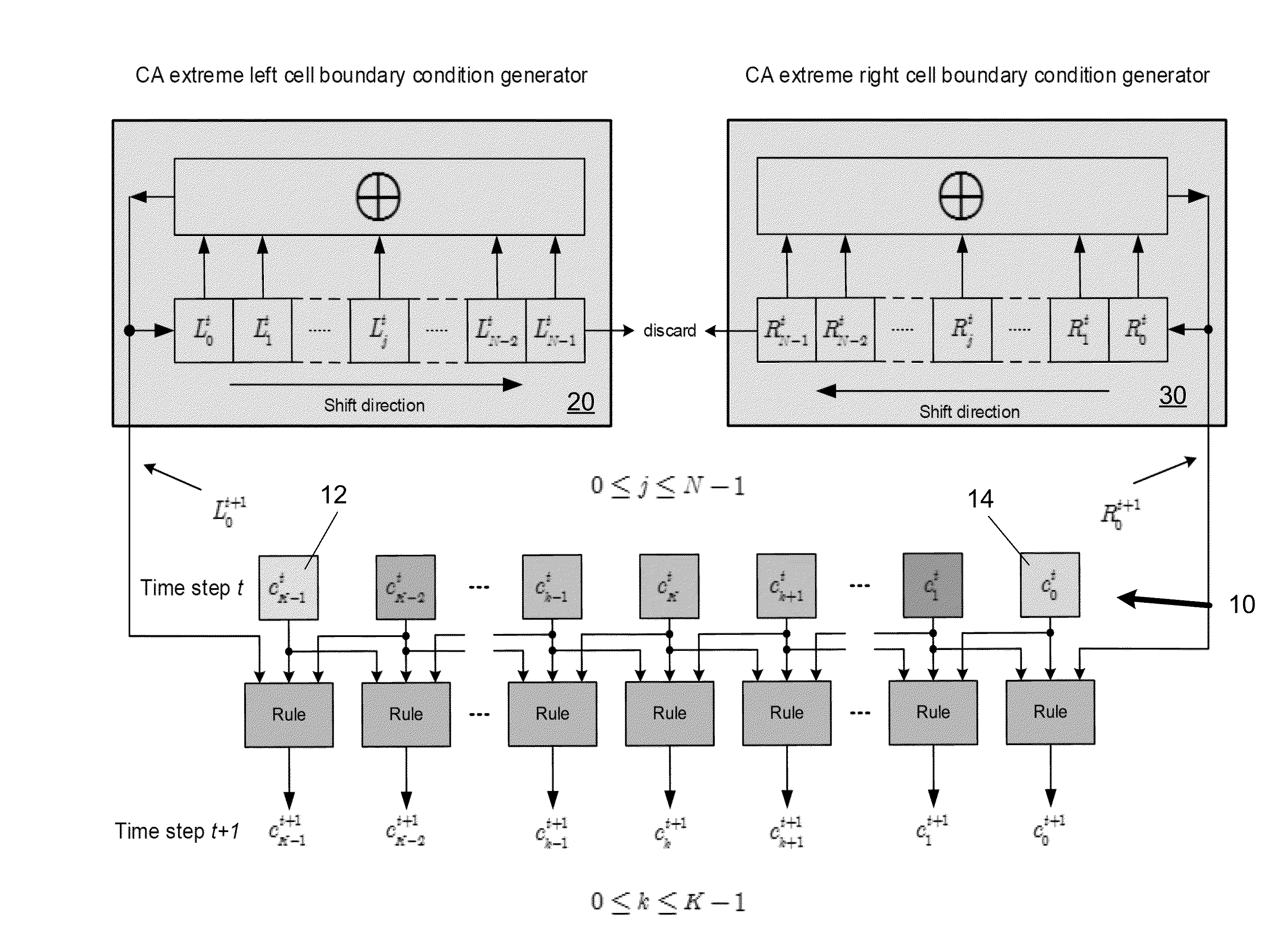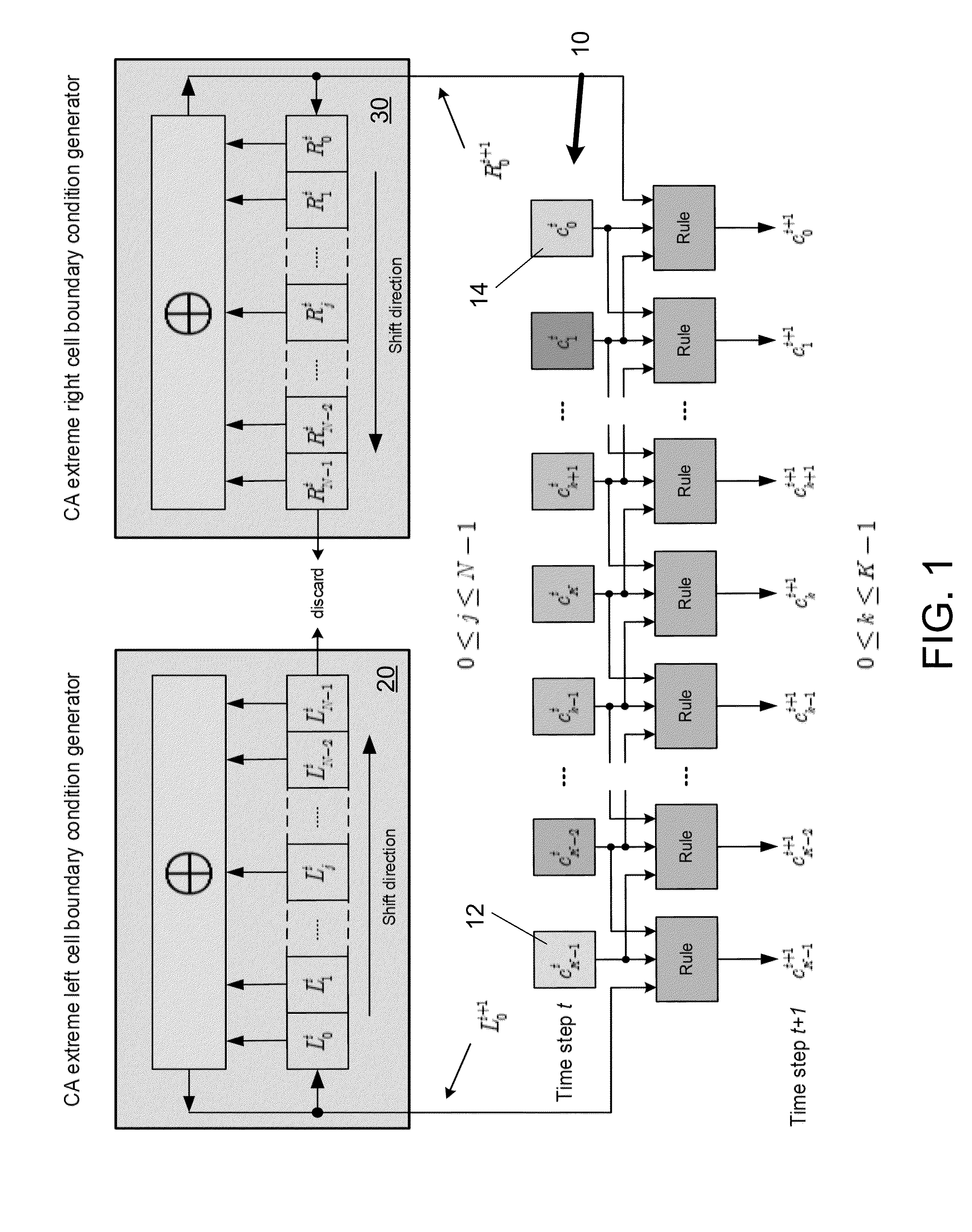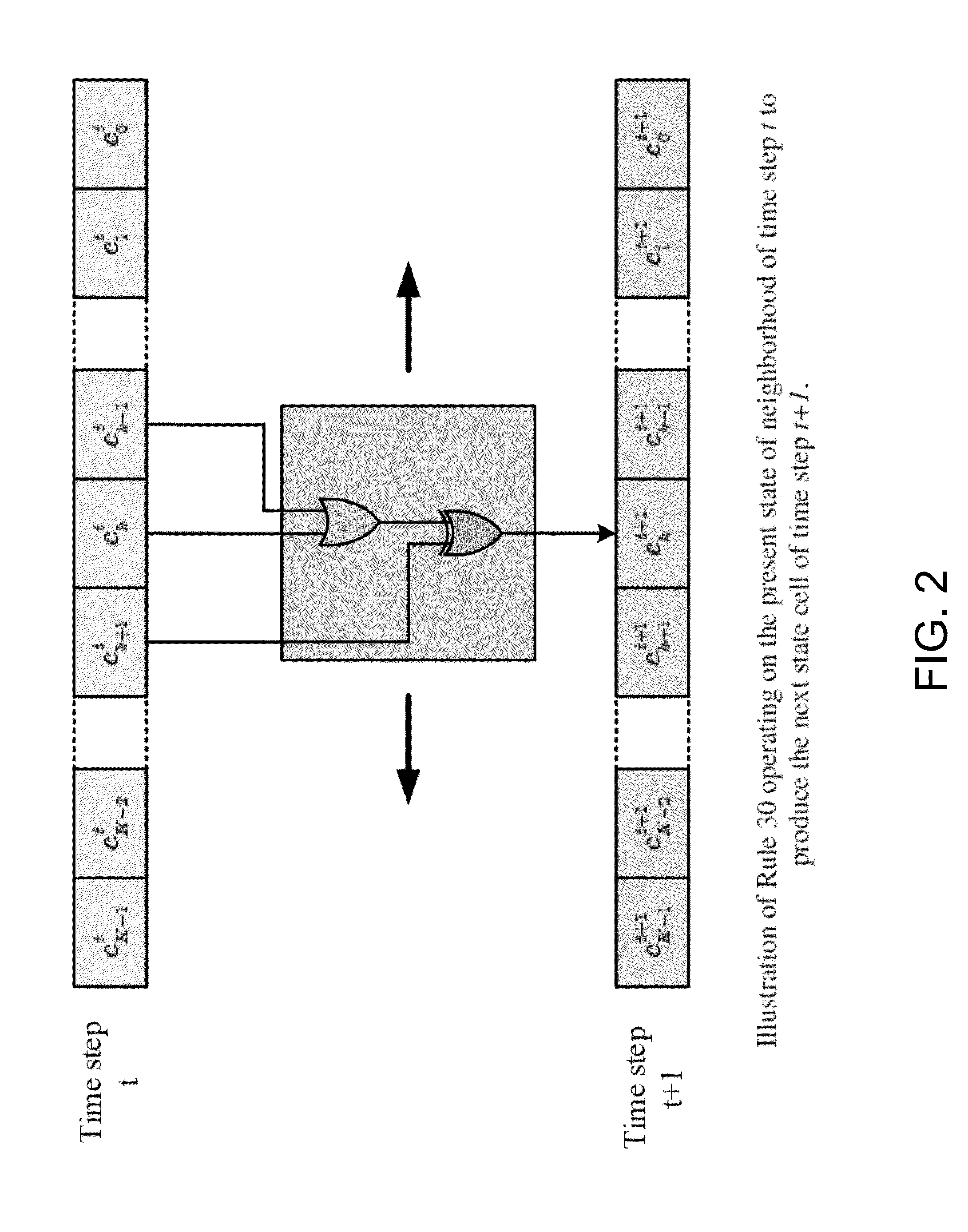Generating pseudo-random numbers using cellular automata
a technology of cellular automata and pseudo-random numbers, applied in the field of cryptography, can solve the problems of simple structure evolving into extremely complex digital structure, and achieve the effect of enabling the performance of complex computations
- Summary
- Abstract
- Description
- Claims
- Application Information
AI Technical Summary
Benefits of technology
Problems solved by technology
Method used
Image
Examples
Embodiment Construction
[0010]In various exemplary embodiments, the present invention comprises a method for using elementary cellular automata (ECA) to generate quality pseudo-random numbers, which may be used in cryptographic and other applications. A cellular automaton is a decentralized computing model that enables the performance of complex computations with the help of only local information. In general, cellular automata comprise a plurality of identical basic memory building blocks that are discrete in time and space, where the structure evolves over time according to a local transition rule. A simple structure can then evolve into an extremely complex digital structures.
[0011]As described herein, and in the attached appendices, cellular automata can be used in information security as an alternative for classic Feedback Shift Registers (FSRs) for pseudo-random sequence generation. In particular, one-dimensional and two-dimensional cellular automata are used to general pseudo-random sequences with g...
PUM
 Login to View More
Login to View More Abstract
Description
Claims
Application Information
 Login to View More
Login to View More - R&D
- Intellectual Property
- Life Sciences
- Materials
- Tech Scout
- Unparalleled Data Quality
- Higher Quality Content
- 60% Fewer Hallucinations
Browse by: Latest US Patents, China's latest patents, Technical Efficacy Thesaurus, Application Domain, Technology Topic, Popular Technical Reports.
© 2025 PatSnap. All rights reserved.Legal|Privacy policy|Modern Slavery Act Transparency Statement|Sitemap|About US| Contact US: help@patsnap.com



